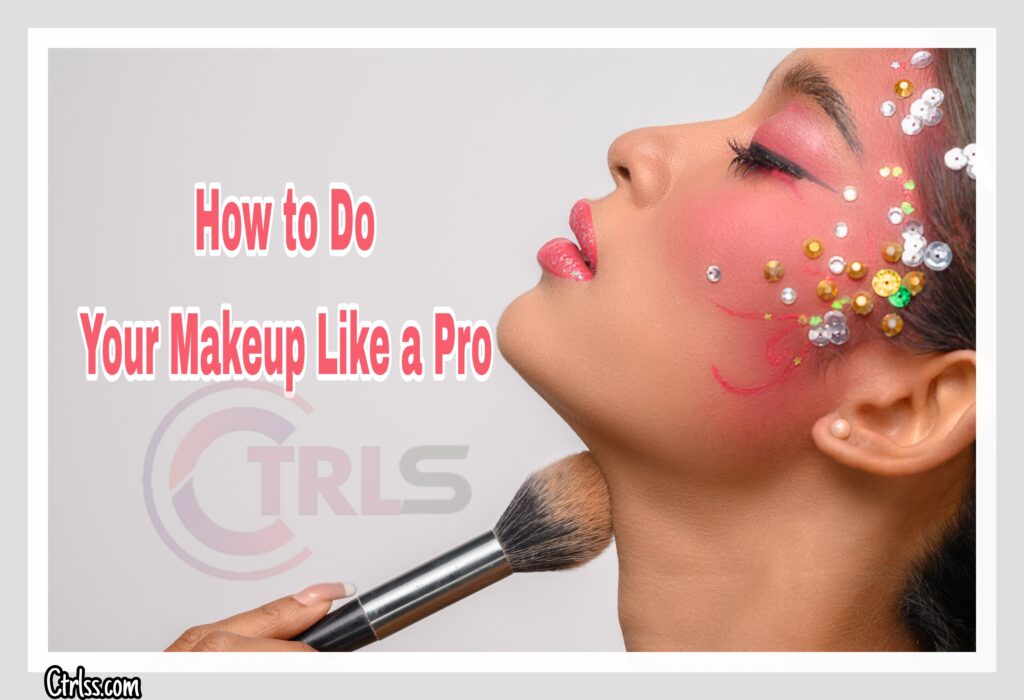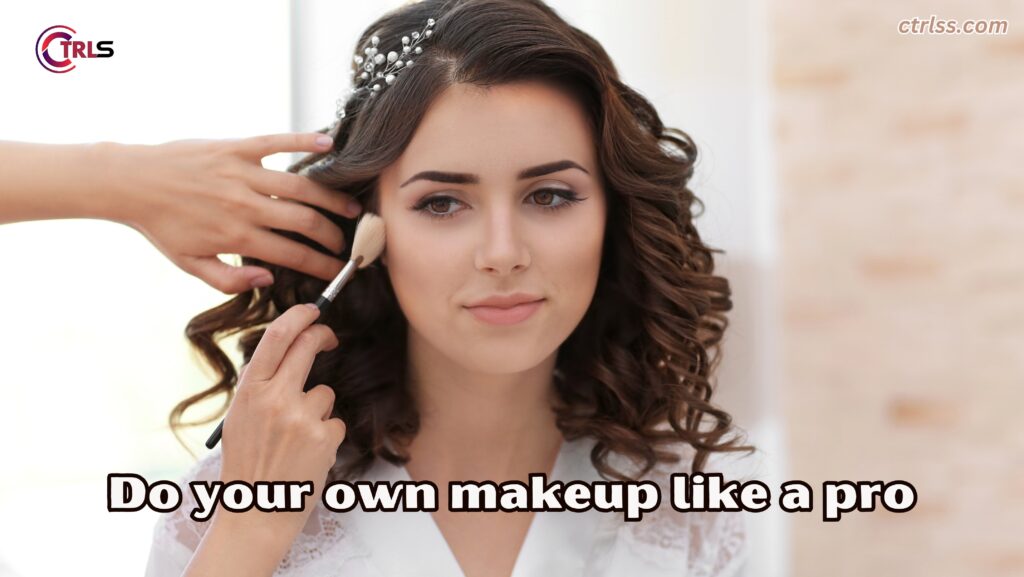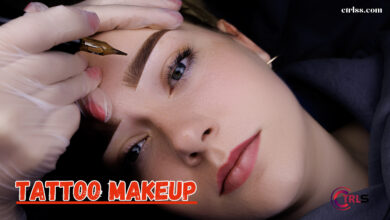How to Do Your Makeup Like a Pro ? Easy Step-by-Step Tutorials
Doing your own makeup can be intimidating, but it doesn’t have to be. With some easy recommendations and tricks, you may discover ways to do your make-up like a seasoned in no time “How to Do Your Makeup Like a Pro?“.

How to Do Your Makeup Like a Pro?
Easy Step-by-Step Tutorials:
- Step 1: Prepare your skin.
- Step 2: Prime your skin.
- Step 3: Apply foundation.
- Step 4: Concealer.
- Step 5: Powder.
- Step 6: Blush.
- Step 7: Bronzer.
- Step 8: Highlighter.
- Step 9: Eyeshadow.
- Step 10: Eyeliner.
- Step 11: Mascara.
- Step 12: Lips.
- Step 13: Setting spray
How to do your own makeup like a pro?

Step 1: Prepare your skin.
Before you start applying any makeup, it’s important to prepare your skin. This will help your makeup look its best and last all day long. Start by washing your face with a gentle cleanser. Then, apply a moisturizer that’s right for your skin type. If you have oily skin, look for a moisturizer that’s oil-free. If you have dry skin, look for a moisturizer that’s hydrating.
Step 2: Prime your skin.
Primer is a thin layer of makeup that you apply to your face before your foundation. It helps to even out your skin tone and create a smooth canvas for your makeup. To apply primer, simply pump a small amount onto your fingertips and massage it into your skin, paying attention to the areas around your nose and mouth.
Step 3: Apply foundation.
Foundation is used to even out your skin tone and create a flawless base for your makeup. To apply foundation, pump a small amount onto your fingertips and blend it into your skin, starting at the center of your face and working your way outwards. Be sure to blend the foundation down your neck and jawline as well.
Step 4: Concealer.
Concealer is used to cover up blemishes, dark circles, and other imperfections. To apply concealer, dot a small amount on the areas of your face that need to be covered. Then, blend it in using your fingertips or a concealer brush.
Step 5: Powder.
Powder is used to set your makeup and keep it in place all day long. To apply powder, use a large powder brush and dust it lightly over your face. Be positive to awareness at the regions of your face which can be susceptible to oiliness, which include your T-zone.
Step 6: Blush.
Blush is used to add a touch of color to your cheeks and give your face a healthy glow. To apply blush, smile and brush the blush onto the apples of your cheeks. Be sure to blend the blush up towards your temples.
Step 7: Bronzer.
Bronzer is used to add warmth and dimension to your face. To apply bronzer, dust it lightly over your forehead, cheeks, and nose. Be sure to blend the bronzer well to avoid any harsh lines.
Step 8: Highlighter.
Highlighter is used to highlight the high points of your face and give you a dewy glow. To apply highlighter, brush it onto the top of your cheekbones, the bridge of your nose, and your brow bones.
Step 9: Eyeshadow.
Eyeshadow is used to enhance your eyes and create a variety of looks. To apply eyeshadow, start by choosing a light shade and applying it to your entire eyelid. Then, choose a darker shade and apply it to the crease of your eyelid. Blend the two shades together to create a smooth transition.
Step 10: Eyeliner.
Eyeliner is used to define your eyes and make them look bigger and brighter. To apply eyeliner , line your upper lash line, starting at the inner corner of your eye and working your way out. You can also line your lower lash line, but be careful not to make your eyes look too small
Step 11: Mascara.
Mascara is used to thicken and lengthen your lashes. To apply mascara, wiggle the wand at the base of your lashes and then pull it up towards the tips. Be sure to coat both the top and bottom lashes.
Step 12: Lips.
Lipstick is used to add color and definition to your lips. To apply lipstick, start by lining your lips with a lip liner that matches your lipstick shade. Then, apply the lipstick to your lips using a lip brush.
Step 13: Setting spray.
Setting spray is used to lock your makeup in place and make it last all day long. To apply setting spray, simply hold the bottle about 6 inches away from your face and spray it evenly over your makeup.
What is the right time to wear makeup?
- The right time to wear makeup is whenever you feel like it!
- Makeup is a form of self-expression and can be worn at any time that makes you feel confident and empowered.
- There are no rules or restrictions on when to wear makeup; it’s all about personal preference.
- Whether it’s for a special occasion, a night out, or simply to enhance your natural beauty, go ahead and wear makeup whenever you want.
- It’s important to remember that makeup should never be used as a mask to hide your true self. Embrace your uniqueness and use makeup to enhance your features and highlight your individuality.
- Remember that you are beautiful just the way you are, and makeup is simply a tool to help you showcase that beauty.
- So, the next time you reach for your favorite lipstick or eyeshadow palette, remember that the right time to wear makeup is always NOW. Embrace it, have fun with it, and let it be a reflection of your inner beauty.
What are the risks of make-up? Does it have an effect on the skin?
Makeup can be a wonderful way to enhance our appearance and boost our confidence. However, it is important to be aware of the potential risks and effects it can have on our skin. Here are a few key factors to consider:
- Skin Irritation: Certain ingredients in makeup, such as fragrances, preservatives, and dyes, can irritate the skin, leading to redness, itching, or even allergic reactions. This is particularly common for individuals with sensitive skin. To minimize the risk, opt for hypoallergenic or non-comedogenic products and patch-test new products before applying them to your entire face.
- Acne Breakouts: Some cosmetics, especially those with heavy oils or comedogenic ingredients, can clog pores and contribute to the development of acne. This is especially true for the products applied to the face, such as foundation, concealer, and powders. Look for oil-free, non-comedogenic options or consider using mineral-based makeup, which is generally less likely to cause breakouts.
- Skin Drying: Certain makeup products, like matte foundations or long-wearing formulas, can have a drying effect on the skin, particularly for individuals with dry or sensitive skin types. To combat this, make sure to properly moisturize your skin before applying makeup and opt for hydrating or moisturizing formulas.
- Aging Effects: Some makeup products, especially those with a high alcohol content or heavy formulas, can contribute to the appearance of fine lines and wrinkles and accelerate the aging process. This is because they can dehydrate the skin and lead to collagen breakdown. Choosing lightweight, hydrating formulations and properly removing makeup before bed can help minimize these effects.
- Infection Risk: Using expired or contaminated makeup can increase the risk of bacterial or fungal infections, such as conjunctivitis or skin infections. It is essential to regularly check the expiration dates of your products, avoid sharing makeup with others, and regularly clean your brushes and sponges to maintain good hygiene.
How do you reduce the possible risks associated with makeup?
To minimize the potential risks associated with makeup, consider these tips: how to do your own makeup like a pro?
- Follow a proper skincare routine: Cleanse your skin thoroughly and moisturize before applying makeup.
- Choose high-quality products: Look for brands that prioritize ingredient safety, offer non-comedogenic and hypoallergenic options, and have a good reputation for product quality.
- Practice good hygiene: Wash your hands before applying makeup, regularly clean your brushes and sponges, and avoid sharing products with others.
- Take breaks: Give your skin some makeup-free days to allow it to breathe and rejuvenate.
- Listen to your skin: If you notice any adverse reactions or skin issues, discontinue using the product and consult a dermatologist.
Thank you for Reading!
>> Makeup



